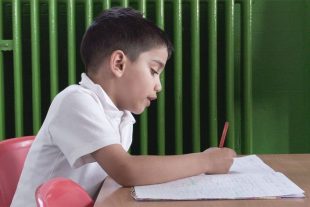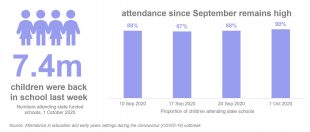
Statistics published yesterday show 90% all children in state funded schools were in attendance last week.
The statistics, which are based on data collected from schools on a daily basis, illustrate that the proportion of pupils in schools rose from 88% the week before and show that just 0.2% of schools are closed.

While those not in school will be absent for a range of reasons including illnesses other than covid-19, some of those pupils not in schools will be have been sent home because they came into close contact with a pupil who has tested positive, in accordance with our guidance. In most cases like this it is not necessary to send whole bubbles home from school because many pupils in a bubble may not have come into close contact with the affected pupil.
Close contact means:
- direct close contacts - face to face contact with an infected individual for any length of time, within 1 metre, including being coughed on, a face to face conversation, or unprotected physical contact (skin-to-skin)
- proximity contacts - extended close contact (within 1 to 2 metres for more than 15 minutes) with an infected individual
- travelling in a small vehicle, like a car, with an infected person
Education Secretary Gavin Williamson said:
The vast majority of schools are open, as has been consistently the case since the start of term, with a two per cent increase in the numbers of pupils attending to more than 7.4 million pupils last week. Attendance in fully open primary schools is now consistent with what we would have expected before coronavirus.
We will continue to work with schools to ensure all appropriate steps are taken to keep pupils and staff safe.